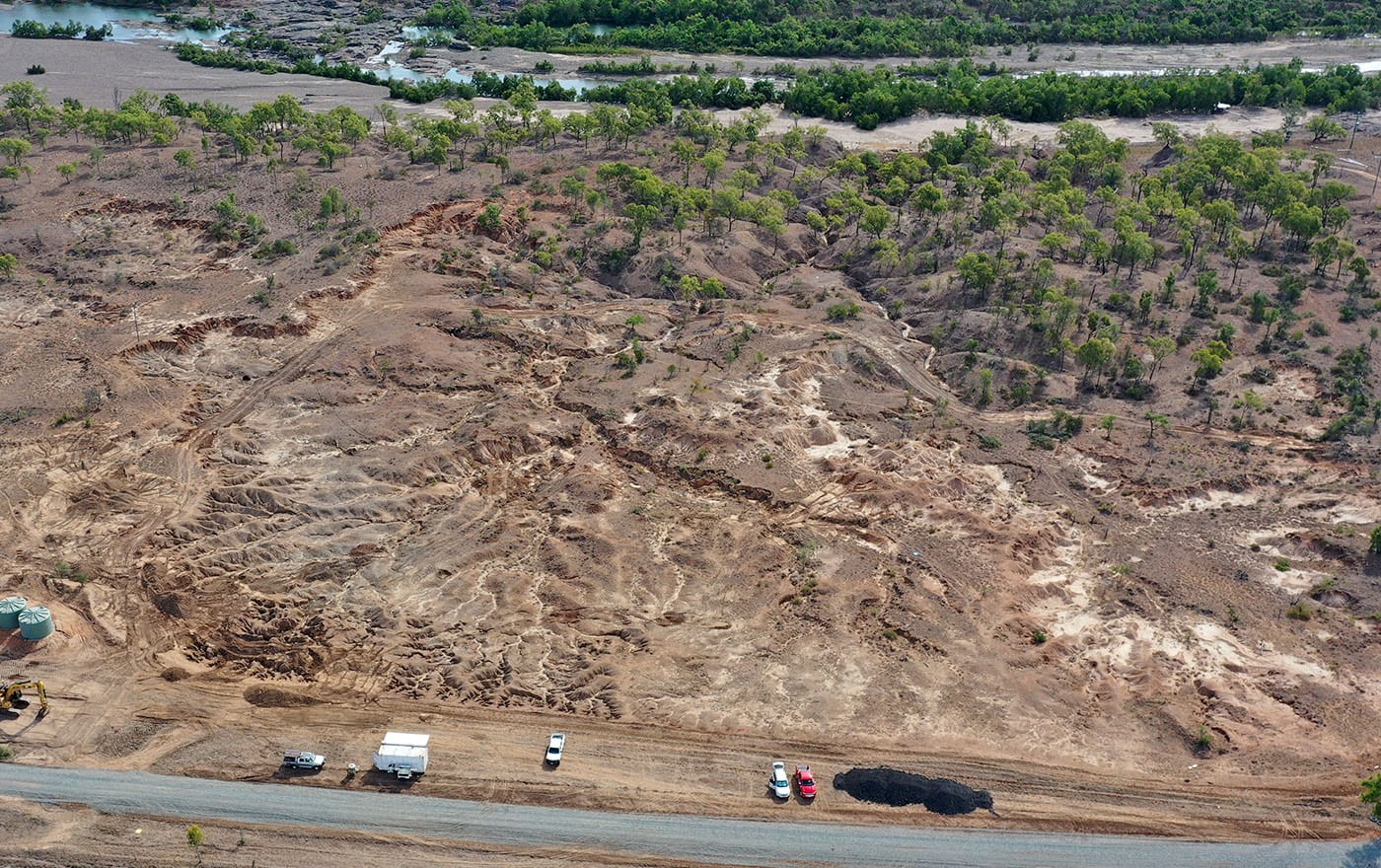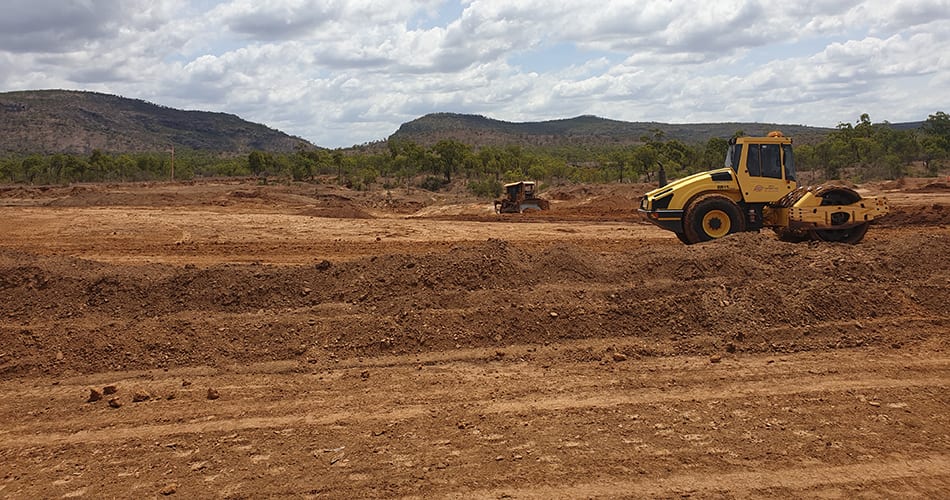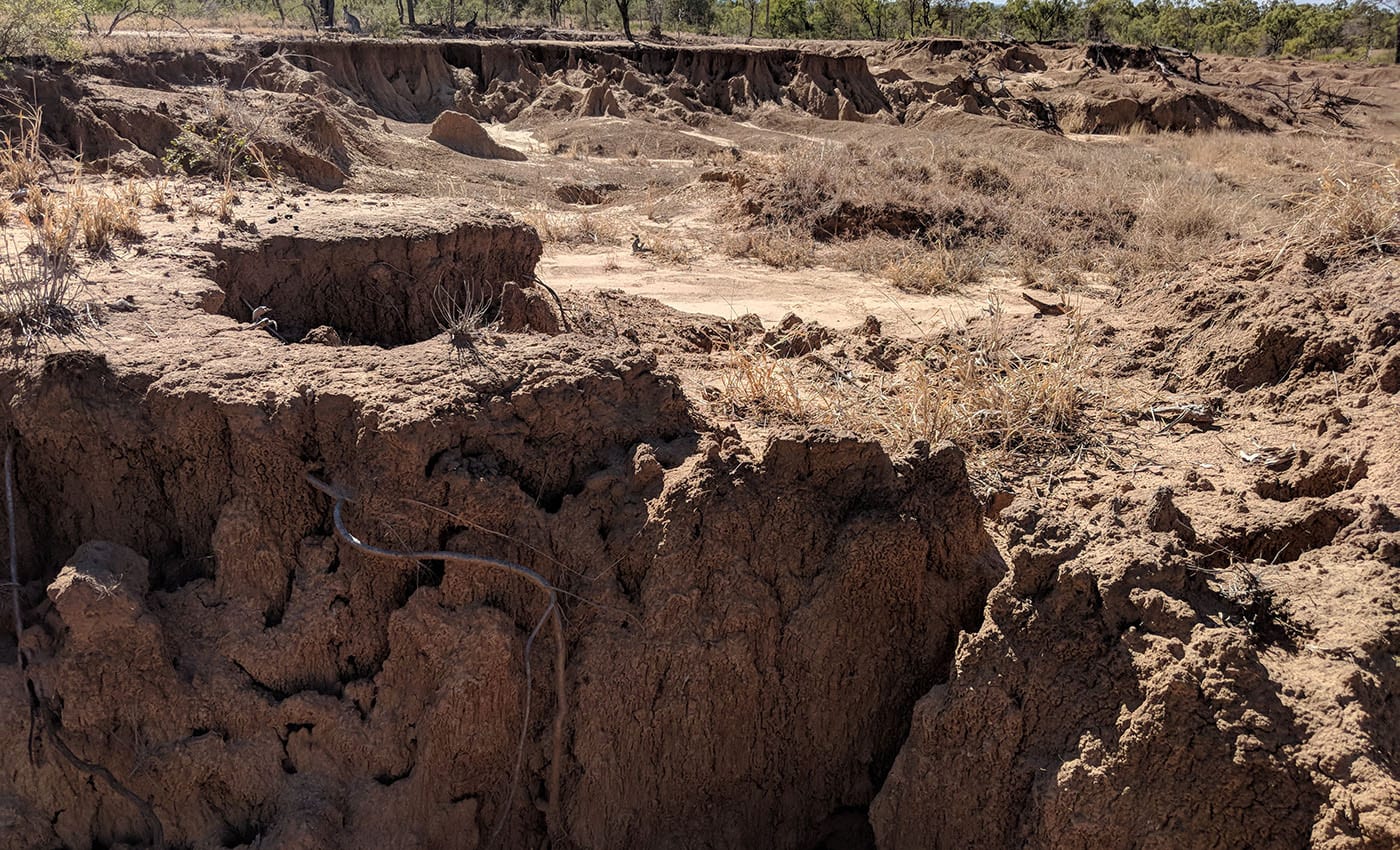
Work begins at Glen Bowen Station large-scale gully remediation
WORK has started at Glen Bowen Station, the LDC’s second large-scale gully remediation site. Machinery was mobilised in November, and earthworks are expected to be completed by mid-December.
Neilly Group Engineering was commissioned to design the remediation measures to be carried out at Glen Bowen.
The site that is being remediated, and known as Gully 1, is an alluvial gully and is eroding primarily through direct rainfall which indicates the soils are highly dispersive. This was confirmed through soil testing.
The actively eroding footprint of Gully 1 has a perimeter of approximately 1.1km, with an internal area of 3.36ha. The banks of the gully scarp are on average 2 – 2.5m high.
This aerial photograph (below) encapsulates the entire footprint of the gully. The drainage lines within the gully all converge to a single drainage line that discharges into the Bowen River.
The design
The design at Glen Bowen involves the reshaping of complex gully networks which will form two stabilised, free-draining basins. The reshaping will involve bank battering and topography reshaping through cut and fill, and compaction earthworks operations.
On-contour rock check dams will be constructed across the bed of the drainage basins to assist in slowing the flow of water and improving the soil condition by enhancing the deposition of fine sediment, nutrients and seed.
The design also includes reshaping three incised linear gullies and one gully scarp which will also be reshaped to create a free draining surface which is less undulated and ties into the existing surface.
The existing earthen bund around the head of the gully will be reinforced to manage overland flows and utilise excess cut from reshaping works.
The reshaped surfaces will be treated including:
- application and incorporation of gypsum to all reshaped and disturbed surfaces;
- spreading of topsoil stripped from the footprint of the works or borrowed from an alternative source on the property;
- application and incorporation of mulch;
- sowing or broadcasting of seed and application of fertiliser; and
- application of coir net matting over the designated batters and upslope areas of the reshaped surfaces.
The cost of the remediation is $415 per ton of sediment yield.
Following remediation we expect:
- improvements in vegetation, cover and biomass, and soil condition;
- reductions in erosion and gully retreat rates; and
- improvements in water quality (sediment concentrations) because less material is being removed and more sediment is being trapped.
Glen Bowen is being monitored and evaluated using a range of practices for the effectiveness of vegetation, runoff and water quality measures.
CSIRO has installed monitoring stations at two gullies – the treatment site that is undergoing remediation and a control site for reference.
Longer term, it is expected there will be improvements in runoff and sediment loads, however this is also influenced by rainfall, so trends will take longer to detect.
Tackling gullies in the BBB
THE BBB produces almost a quarter of the total fine sediment load that ends up in the Great Barrier Reef lagoon.
About 65 per cent of fine sediment comes from gully erosion which makes gully management a high priority for investment, and is why gully remediation is a key component of the LDC project.
The Landscape Remediation program is trialing large and small-scale gully remediation approaches to improve water quality, and to determine cost effective solutions that can be transferred to other projects and catchments.
By the end of 2020:
- Work will be complete on three demonstration sites showingcasing different methods of treating large-scale gully erosion; and
- Multiple small-scale erosion sites will be remediated, in partnership with landholders.
The LDC goal for the Landscape Remediation program is to produce a high resolution spatial map of active gullies, and a long-term rehabilitation investment prioritisation plan for the BBB.
This will mean having multiple shovel-ready projects available to take advantage of future funding opportunities.




